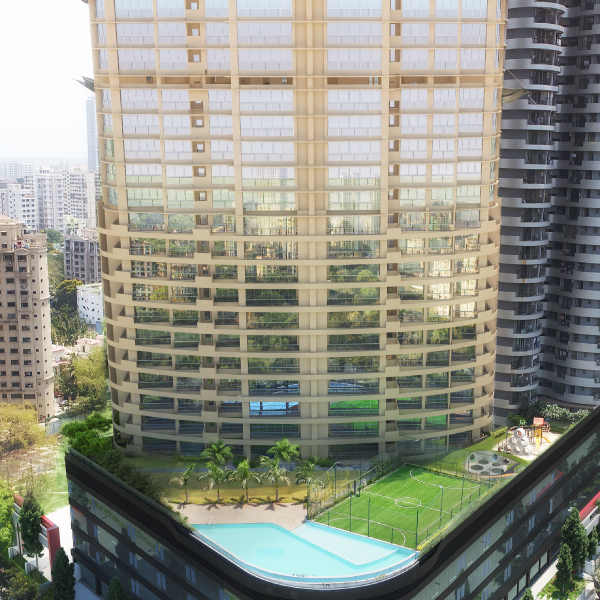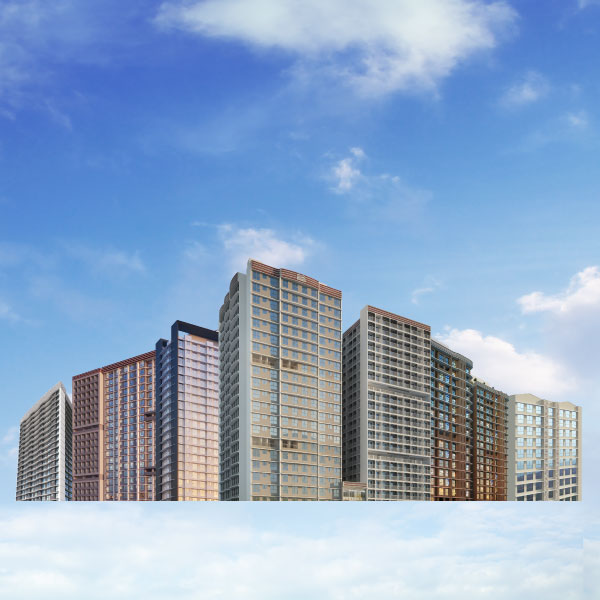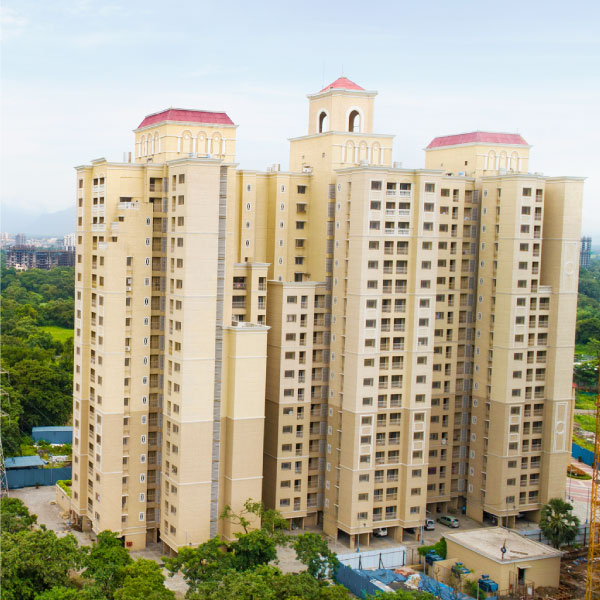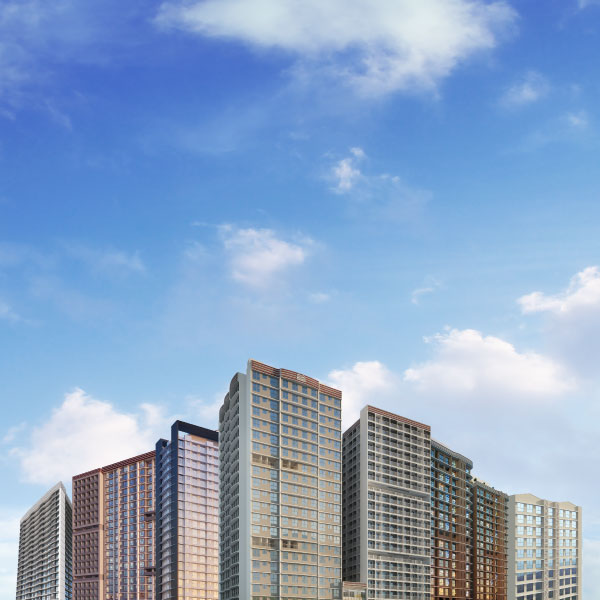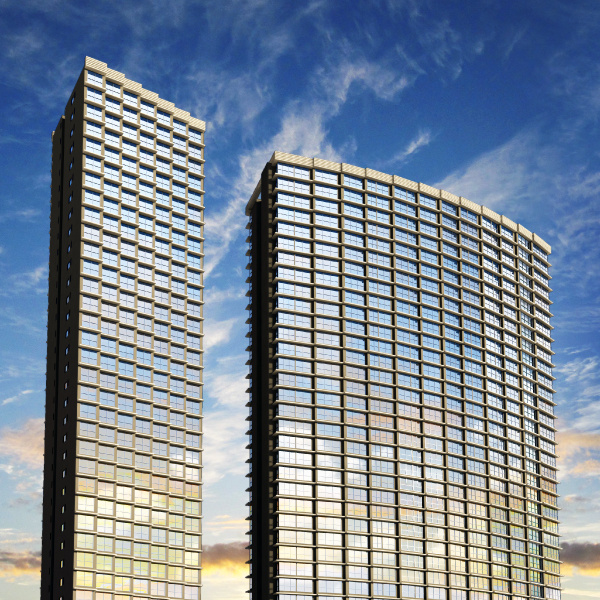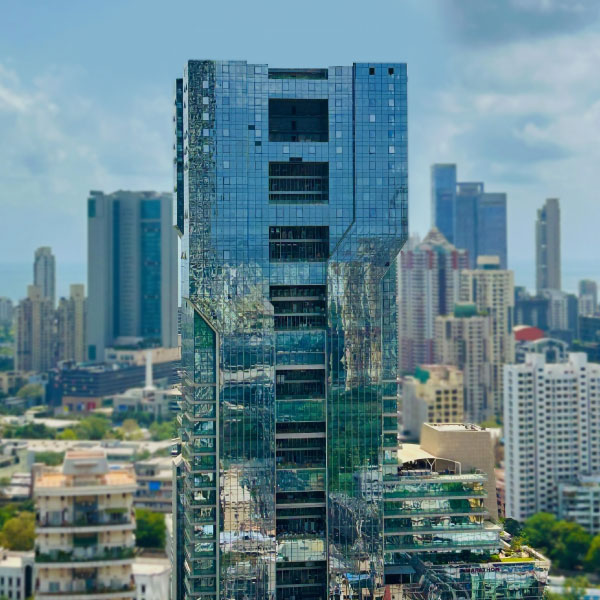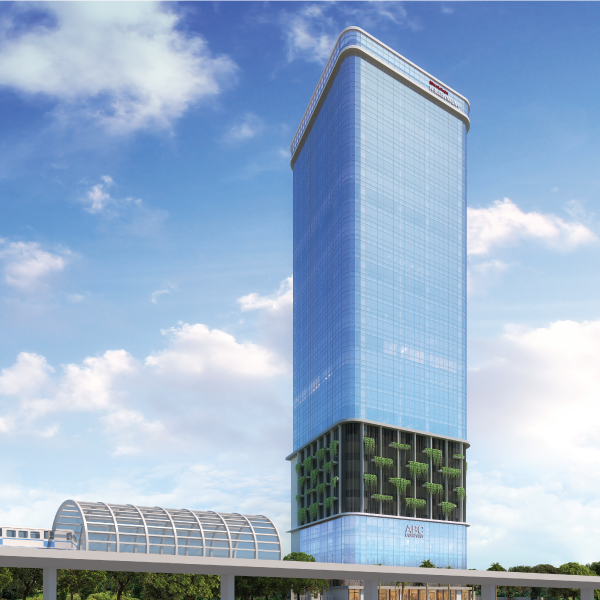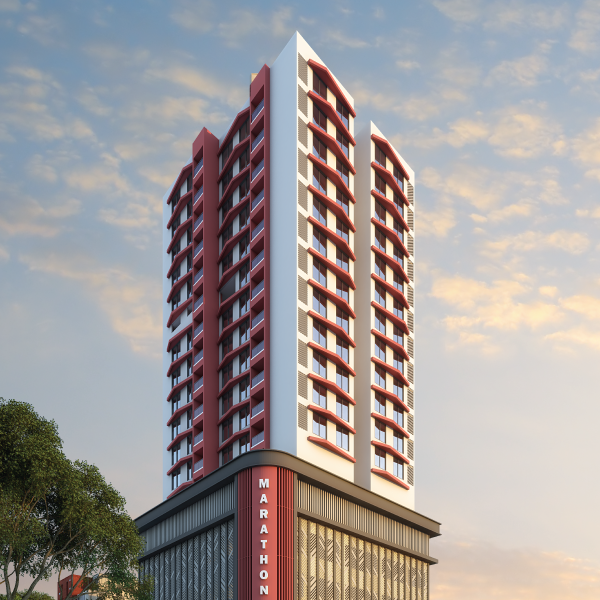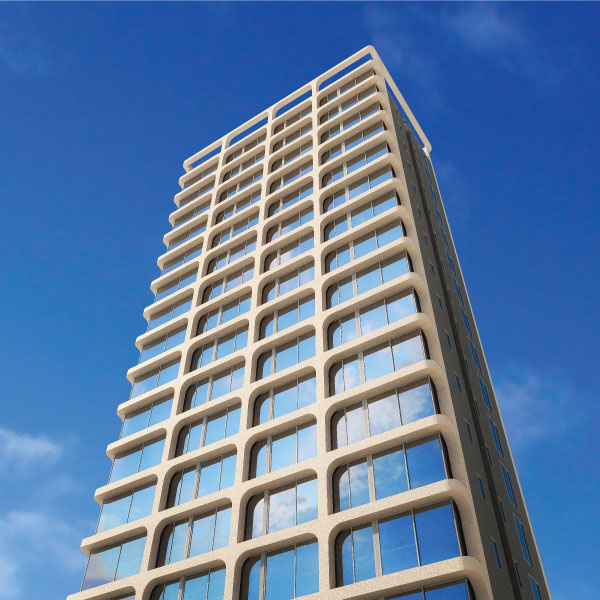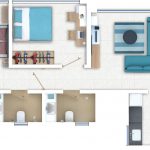5 Benefits of a Virtual Tour in Real Estate
Last Updated on, October 21st, 2022

Virtual reality and augmented reality have taken the world by storm in the last few years. With the help of this technology, businesses can give customers an immersive experience of their products or services. The real estate industry, in particular, can benefit greatly from this advanced technology.
What is Virtual Reality in Real Estate & How Is It Helpful While Buying Under-Construction Property?
Today, customers can get a glimpse of the property without visiting it, all thanks to virtual tours.
Buying an under-construction property is quite challenging, especially because buying a home is such a major decision. How does one envision what they are buying when it’s not even built? It’s really hard to base life-changing decisions on a 2D plan. Traditionally, builders have sold an under-construction property using 2D floor plans. This is unintuitive for most customers and critical information like views cannot be understood. One step ahead of this is 2D rendered images of the space. These are realistic renderings (often called artists impressions) of the space. However, these only show you specific angles of the property (obviously, builders will choose to showcase only the most flattering angles of their property). Another step ahead of this is video walkthroughs, where a camera moves throughout the entire space. You can see examples of all these 3 traditional types of showcasing a property in our gallery for Monte South, our luxury project at Byculla.
Sure, some projects have sample flats and show flats that indicate how the apartment is going to look, but you will still not get the experience of what the apartment is going to feel like in the actual building – what’s the view going to be like? Will there be enough sunlight?
Another issue with show flats is that lots of projects have various configurations and variants of apartments, whereas the show flat is typically of just one variant.
Virtual tours come in two types – simple 360-degree panorama images and more advanced real-time rendered experiences. The basic principle is the same – users can view the virtual tour on their mobile devices or desktops or can connect a VR headset for a more immersive experience.
Simple 360 tours have static viewpoints from which the user can look around. He can navigate from one fixed point to another but cannot move around the space freely. More advanced real-time rendered experiences require more powerful gaming engines like Unreal or Unity. In these experiences, the user can move around freely in the entire space.
Mobile tours are nifty because almost everyone has a smartphone. With a mobile virtual tour, you can look around the space by moving your phone around – it’s as if you were looking at the space through your phone camera on your screen. You can also navigate from space to space using simple controls. You can check on such a virtual tour of our project Marathon Nexzone at Panvel here. You can also connect a simple phone VR headset like the Google Cardboard to your phone for a Virtual Reality or metaverse experience.
More advanced VR headsets like the Oculus Quest or Samsung Gear render more realistic graphics but are expensive and typically need a powerful PC to run the VR experience
Real estate developers are increasingly using VR to showcase their properties clearly and creatively. Potential buyers can check out every room and corner of the property with a few clicks. Unlike simple photos and videos, virtual reality offers an immersive experience to customers. With VR, developers can even do cool things like allowing the user to change the materials in space, try different furniture layouts, change the floor plans or check the view from various heights. Views are shot using a special 360-degree drone. At Nexworld, we’ve even showcased our design principles by using VR so customers can understand the difference between good design and bad design. We have also given VR glasses to our channel partners so they can showcase the project to their clients.
At several of our projects, we have deployed Virtual Reality headsets. We have developed real-time rendered high-quality virtual reality experiences at several of our projects – Marathon Nexworld, Dombivli, and Marathon Neohomes, Bhandup, Monte South, Byculla and Zaver Arcade, Mulund. We have also developed a simpler virtual tour experience for all our projects.
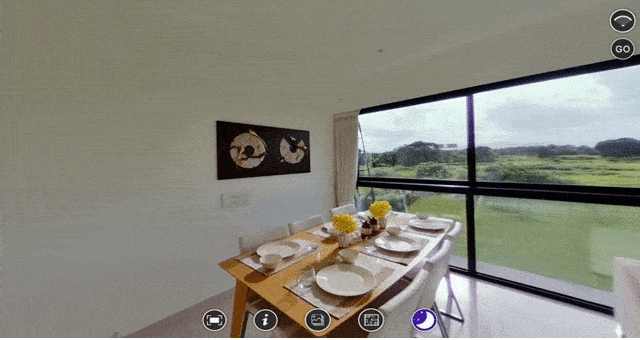
Benefits of Metaverse in Real Estate
1. Make an Informed Choice
Virtual tours cast a spell on the potential customer. These tours offer a glimpse of the whole property without actually visiting it. Customers can literally imagine themselves living in that house. Hence, with a high-end immersive virtual tour experience, you can know the space, structure and ventilation of the house. It helps you make an informed buying decision.
2. Saves Time
Virtual tours save time for buyers. A customer goes through plenty of properties before finalizing one. It may be arduous for a customer to physically visit every property, especially the ones far off. Rather, he/she can access virtual tours of multiple properties before they finalize on one that interests them. These virtual tours can be accessed 24/7 from your smartphones and laptops. It saves a customer’s travelling time and helps them focus only on other things that matter in the home-buying journey. During the lockdown, virtual tours enabled us to continue to provide a great sales experience to our customers.
3. Provides Intriguing Digital Experience
3D walkthroughs are quite interactive in design. Customers get their own space to independently explore the property and ask questions, if any. They can see the view from the balcony, the natural lighting in the room, the light fixtures and lights, the storage space, and much more. It inspires the customer to take the next step in their home-buying journey.
4. A Good First Impression
When you provide your customers with a high-end, tech-savvy service like a virtual tour of the property, it creates a lasting first impression. It helps them trust the brand and its offerings. It also enhances the reliability of the developer. It provides X-factor to the developer and makes the brand stand out from the competition.
5. Create an Emotional Connection
Since clients can access the virtual tours whenever they want, this gives them enough time to think if this is the property they have been searching for. Moreover, they can also show these virtual tours to people in their network and get their feedback. This creates a sense of ownership amongst the customers. You can further enhance these experiences by offering a virtual tour of amenities and some 3D walkthroughs of entrance and open spaces. The more time and effort they invest in seeing virtual tours of your property, the more likely will they feel committed to taking the next step in homebuying journey.
At Marathon, We Deliver Real Experiences
At Marathon, we have always been committed to transparency – in fact, our mantra is to under-commit and over-deliver. As you can see below, our final product is always the same or even better than the artists’ impressions we show.
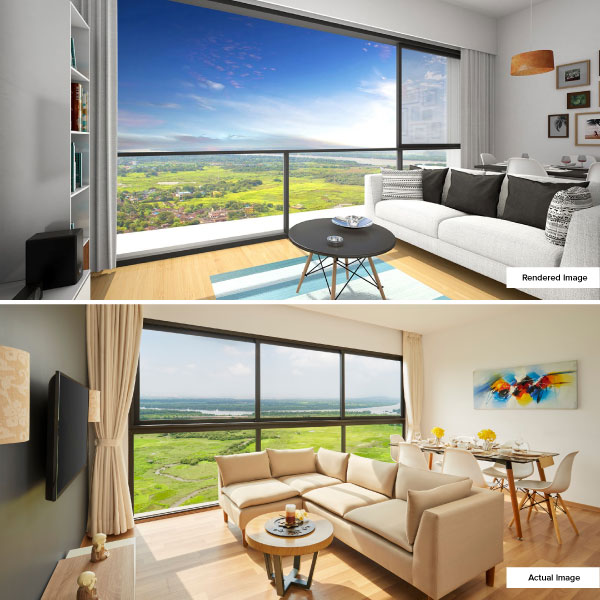
Our goal is to provide as much information to our customers as possible to help them make a decision that they are happy with. Which is why we try to provide a real experience of the apartments to our customers.
As a policy, we don’t use stock images like most other developers, all images in our brochure are 3D renders of the actual spaces in our projects. All views shown in our images are actual drone shots taken from the site at a realistic height.
You can read more about what sets Marathon apart on our website.



